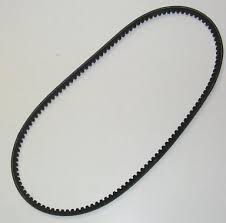ALTERNATOR POWER SYSTEM: The alternator system consists of a belt-driven alternator, a voltage regulator/ alternator control unit mounted on the left hand side of the firewall and circuit breaker located on the instrument panel. The system is controlled by the left hand portion of


ALTERNATOR: The alternator is three phase. delta connected with integal silicon diode rectifiers. The alternator is rated at 28 volts at 60 amperes continuous output. The resulting do output is applied to the aircraft bus and sensed by the voltage regulator. The regualtor controls the excitation applied to the alternator field thus controlling the output of the alternator


ALTERNATOR FIELD PROTECTION: A 5-amp automatic resetting circuit breaker located on the left hand. instrument panel stiffner. is provided to protect the alternator field circuit.
ALTERNATOR REVERSE VOLTAGE DAMAGE. The alternator is very susceptible to
reverse polarity current because of the silicon diodes. The diodes. having a very high resistance to reverse current flow, are used without any cutout relay such as used on a generator system. The alternator diodes are arranged with their cathodes connected to the aircraft bus bar which is positive and no back current will flow. If the polarity of the battery is reversed, the diodes will offer no resistance to the current flow. The current rating of the diodes is exceeded and diode failure may result.
OVER-VOLTAGE WARNING SYSTEM The over-voltage system consists of an over-voltage sensor switch and red warning light labeled "HIGH VOLTAGE". The over-voltage sensor is attached to the wire bundle behind the instrument panel and the light is located on the right hand side of the instrument panel. When an over-voltage trip off occurs the over-voltage sensor turns off the alternator system and the red warning light comes on. The ammeter will show a discharge.
VOLTAGE REGULATOR ;The voltage regulator is a solid state regulator. The regulator is a remove and replace item and not repairable in the field.
ALTERNATOR CONTROL UNIT ;The alternator control unit is a solid state voltage regulator with an overvoltage sensor and low-voltage sensor incorporated in the unit. The control unit is not adjustable and is a remove-and-replace item.

the split rocker, master switch labeled "ALT." Thru 1978 models an over-voltage sensor switch and red warning light labeled "HIGH VOLTAGE" are incorporated to protect the system. Beginning with 1979 models, over-voltage and under-voltage switches are contained within the alternator control unit and a red warning light labeled "LOW VOLTAGE" is installed on the instrument panel). The aircraft battery supplies the source of power for excitation of the alternator.
ALTERNATOR: The alternator is three phase. delta connected with integal silicon diode rectifiers. The alternator is rated at 28 volts at 60 amperes continuous output. The resulting do output is applied to the aircraft bus and sensed by the voltage regulator. The regualtor controls the excitation applied to the alternator field thus controlling the output of the alternator
ALTERNATOR FIELD PROTECTION: A 5-amp automatic resetting circuit breaker located on the left hand. instrument panel stiffner. is provided to protect the alternator field circuit.
ALTERNATOR REVERSE VOLTAGE DAMAGE. The alternator is very susceptible to
reverse polarity current because of the silicon diodes. The diodes. having a very high resistance to reverse current flow, are used without any cutout relay such as used on a generator system. The alternator diodes are arranged with their cathodes connected to the aircraft bus bar which is positive and no back current will flow. If the polarity of the battery is reversed, the diodes will offer no resistance to the current flow. The current rating of the diodes is exceeded and diode failure may result.
OVER-VOLTAGE WARNING SYSTEM The over-voltage system consists of an over-voltage sensor switch and red warning light labeled "HIGH VOLTAGE". The over-voltage sensor is attached to the wire bundle behind the instrument panel and the light is located on the right hand side of the instrument panel. When an over-voltage trip off occurs the over-voltage sensor turns off the alternator system and the red warning light comes on. The ammeter will show a discharge.
VOLTAGE REGULATOR ;The voltage regulator is a solid state regulator. The regulator is a remove and replace item and not repairable in the field.
ALTERNATOR CONTROL UNIT ;The alternator control unit is a solid state voltage regulator with an overvoltage sensor and low-voltage sensor incorporated in the unit. The control unit is not adjustable and is a remove-and-replace item.
No comments:
Post a Comment